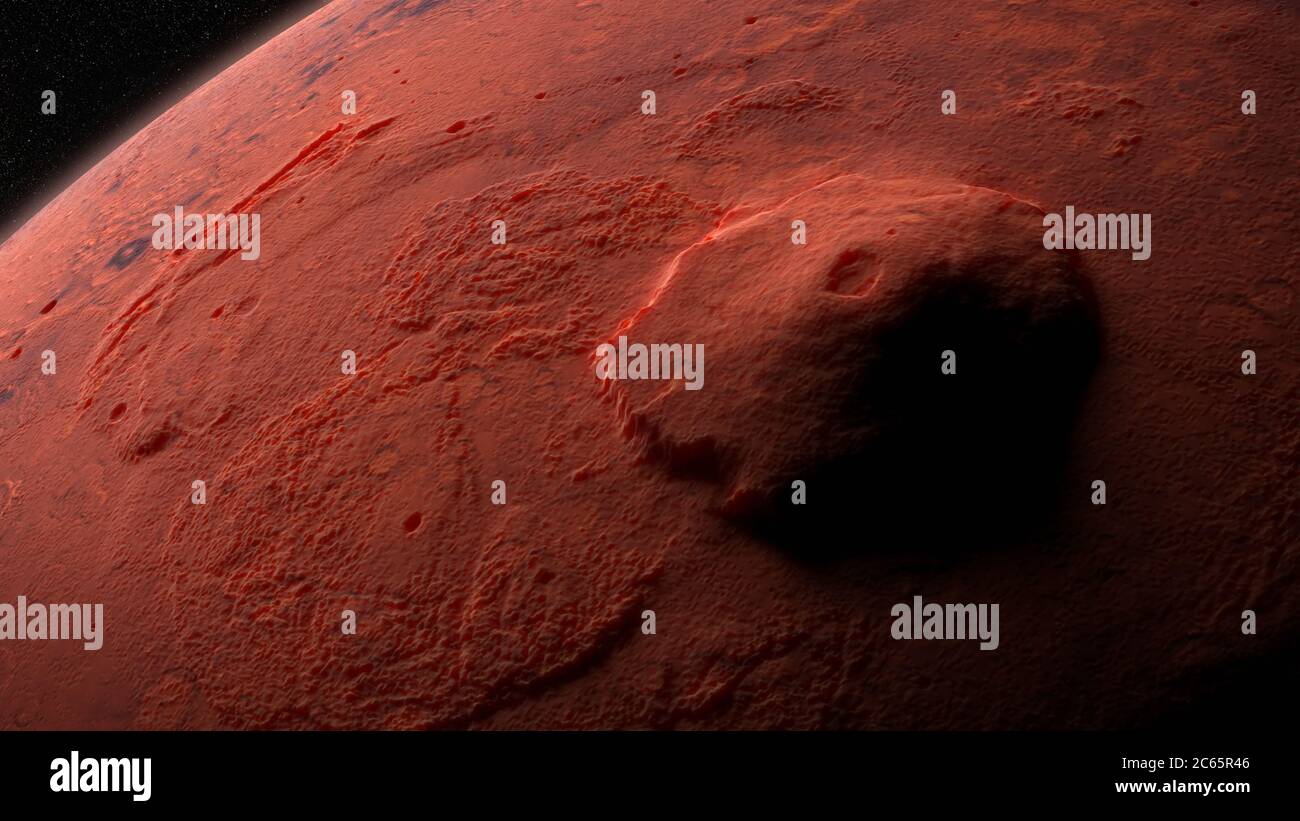Mars has the solar system s biggest volcano and it was able to grow so big because mars has no shifting tectonic plates

Mars: Home to the Solar System’s Largest Volcano

Mars, the fourth planet from the Sun, has always captivated astronomers and space enthusiasts alike. Known as the “Red Planet” due to its rusty appearance, Mars is a planet full of wonders waiting to be discovered. One of its most remarkable features is the presence of Olympus Mons, the largest volcano in the entire solar system. This colossal formation has fascinated scientists for decades, prompting them to delve into its origins and uncover the secrets behind its immense size.
The Mighty Olympus Mons

Olympus Mons stands tall as a shield volcano, stretching a staggering 13.6 miles (22 kilometers) high and spreading over an astonishing area of around 114,000 square miles (297,000 square kilometers). To put its size into perspective, this Martian giant is nearly three times the height of Mount Everest, making it the tallest volcano known to us in the entire solar system.
The immense size of Olympus Mons is attributed to a unique factor that sets Mars apart from Earth - the absence of shifting tectonic plates. On our own planet, volcanic activity typically occurs at plate boundaries, where the Earth’s crust is constantly moving and shifting. This movement causes pressure to build up, leading to the formation of volcanoes. However, Mars lacks this mechanism. Without tectonic plate movement, the volcanic activity on Mars is concentrated in specific hotspots, allowing these volcanoes to grow to unprecedented sizes.
Martian Volcanic Activity
Understanding the volcanic activity on Mars has been a subject of extensive research. Data obtained from various missions, including the Mars Global Surveyor and Mars Reconnaissance Orbiter, have provided valuable insights into the Red Planet’s geological history. By examining the Martian surface and analyzing the composition of volcanic rocks, scientists have been able to piece together a comprehensive picture of this extraterrestrial volcanic phenomenon.
Evidence suggests that the formation of Olympus Mons and other large Martian volcanoes is linked to a process known as “mantle plume activity.” A mantle plume is a column of hot rock that rises from the boundary between the planet’s core and mantle. As this plume reaches the Martian surface, it results in volcanic eruptions, gradually building up the massive shield volcanoes we observe today. With no tectonic plate movement to redirect the flow of lava, these volcanic structures can continue to grow unimpeded.
A Window into Mars’ Geological Past
Olympus Mons serves as a remarkable window into Mars’ geological past. By studying its structure and composition, scientists have gained valuable insights into the planet’s volcanic history. The dating of different lava flows on the volcano’s slopes has allowed researchers to estimate the age of Olympus Mons and its eruptions. These findings have provided crucial information about the duration, frequency, and intensity of volcanic activity on Mars throughout its history.
The presence of Olympus Mons and other volcanoes on Mars showcases the diverse geological processes that shape our neighboring planet. While Earth and Mars share some similarities, including the presence of volcanoes, their unique geological attributes make them distinct. By unraveling the mysteries of Mars’ volcanic past, scientists take significant strides in understanding the complex evolution of rocky planets like ours.
Sources:
Related Posts
Quick Links
Legal Stuff

